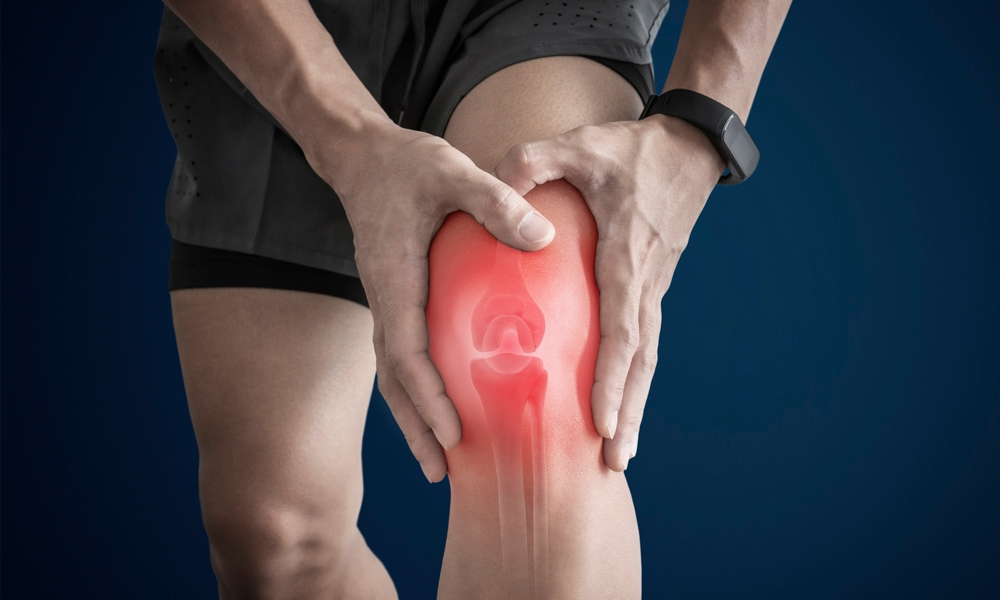-
 Toll Free No 9146-744-744
Toll Free No 9146-744-744 - Appointment

Knee replacement surgery is a transformative procedure that can significantly improve mobility and reduce pain in individuals with chronic knee conditions. However, the journey to full recovery doesn't end with the surgery itself.After undergoing a knee replacement, embracing rehabilitation, making healthy lifestyle decisions, and maintaining self-care become crucial aspects of postoperative life. In this blog, we will delve into key recommendations for optimizing recovery and ensuring a long-lasting, fulfilling, and active life following knee replacement surgery.
Following knee replacement surgery, your orthopedic surgeon will provide specific post-operative instructions. These instructions may include wound care, medication management, weight-bearing restrictions, and exercises to perform at home. Adhering to these guidelines is critical for a successful recovery and to minimize the risk of complications. Always consult your surgeon if you have any concerns or questions about your recovery plan.
Physical therapy is a cornerstone of recovery after knee replacement surgery. Attend all recommended physical therapy sessions and diligently perform prescribed exercises both during the therapy sessions and at home. Physical therapy helps strengthen the muscles around the knee joint, improve range of motion, and enhance overall joint function. Consistency and commitment to physical therapy significantly contribute to the success of your knee replacement.
Maintaining a healthy weight is essential for the longevity of your knee replacement. Excess body weight places additional stress on the knee joint, potentially leading to faster wear and tear of the implant. Adopting a balanced and nutritious diet can aid in weight management and support optimal joint health. Consult with a registered dietitian to create a meal plan tailored to your needs.
After recovering from knee replacement surgery, it's essential to stay active while avoiding high-impact activities that may strain the knee joint. Engaging in low-impact exercises such as walking, swimming, stationary cycling, and yoga can help maintain joint flexibility and muscle strength without putting excessive stress on the replaced knee. Always consult your surgeon or physical therapist before starting any new exercise routine.
Incorporate joint-friendly activities into your daily routine. When performing tasks that involve bending or lifting, use proper body mechanics to avoid unnecessary strain on your knees. Using assistive devices like reachers and elevated toilet seats can also make daily activities more manageable and reduce strain on the knee joint.
Both prolonged sitting and standing can be challenging for the knee joint. If your lifestyle involves prolonged periods of either, take regular breaks to stretch and move your legs. Changing positions frequently can help prevent stiffness and discomfort in the knee.
Wearing supportive and comfortable footwear can make a significant difference in knee comfort and stability. Opt for shoes with proper cushioning and arch support that allow for a more even distribution of weight during walking and other activities.
While some discomfort is expected during the initial stages of knee replacement recovery, persistent or severe pain should be addressed promptly. Follow your surgeon's recommendations for pain management and take medications as prescribed. Additionally, applying ice packs to the knee can help reduce swelling and inflammation.
Recovery after knee replacement is a gradual process.Pay heed to your body's signals and refrain from overexerting yourself prematurely.Overexertion or trying to resume vigorous activities before you are ready can lead to setbacks in your recovery.
Regular follow-up appointments with your orthopedic surgeon are essential to monitor your progress and address any concerns. These appointments allow your surgeon to assess the functioning of the knee replacement and address any potential issues early on.
Proper hydration is crucial for overall health, including joint health. Drinking an adequate amount of water can help keep the joints lubricated and facilitate proper functioning.
If needed, consider making modifications to your home environment to enhance safety and convenience. This may include installing handrails in bathrooms and stairways, using a shower chair, or using assistive devices for daily tasks.
Life after knee replacement can be rewarding and liberating, allowing you to resume activities you once enjoyed without debilitating pain. However, achieving a successful and long-lasting outcome requires dedication to rehabilitation, healthy lifestyle choices, and ongoing self-care. By adhering to post-operative instructions, committing to physical therapy, and making joint-friendly lifestyle adjustments, you can maximize your recovery and the longevity of your knee replacement. Remember, every individual's journey is unique, so consult your healthcare team regularly and be patient with yourself as you progress towards a pain-free and active life after knee replacement surgery.
At Hospione, We're A Dedicated Team Of Leading Surgeons And Healthcare Tech Experts. We're Here To Make Surgery Decisions Easy And Stress-Free For You. If You Need Help, Have Questions, Or Seek Guidance On Your Healthcare Journey, Don't Hesitate To Reach Out To Us Today. Your Health And Well-Being Matter Greatly To Us!
Copyright © 2023 hospione.com - All Rights Reserved | Developed by Digital Marketing StudioGenix LLP
1 Comments
https://odessaforum.biz.ua/
22 Jul, 2024
hello!,I lik your writing very a lot! proportion we communicate more about your post on AOL? I need a specialist in this area to resolve my problem. May be that is you! Taking a look ahead to see you. https://odessaforum.biz.ua/
Leave a Reply
Your email address will not be published.Required fields are marked*